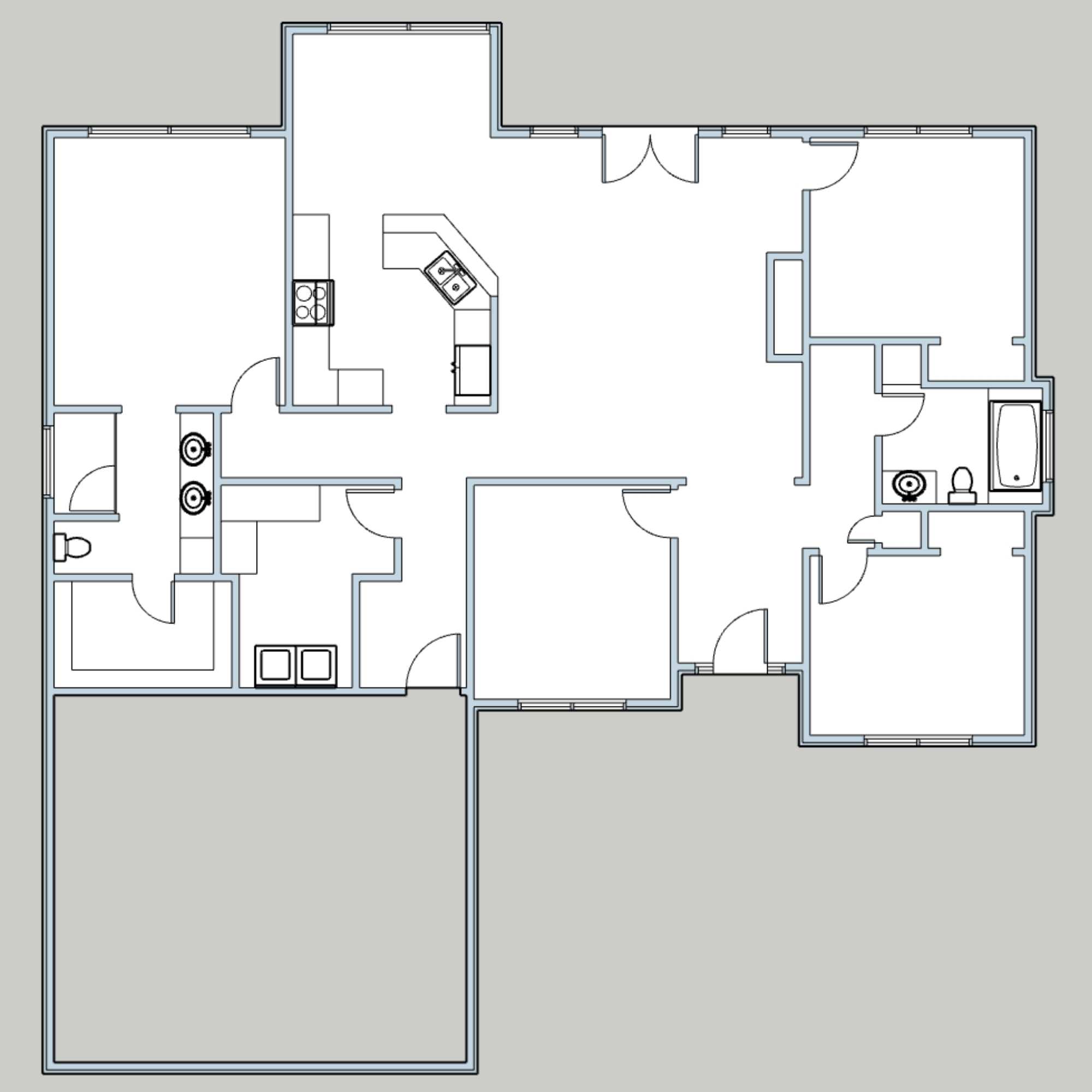
Imagine walking into a car dealership to buy a vehicle. The sales rep there talks all about the awesome features and quality of the cars, gives you a great price, and makes you feel really confident about buying from them. You tell the salesperson that you're ready to pick your car and seal the deal.
Instead of being shown the cars that they have, with the exact specifications and features that are included, all the contract says is that you can definitely have a functional vehicle that runs really well. It will have wheels, the ability to steer, and of course some seats for passengers. There can be trunk space and some features to make you more comfortable while you're driving. It will cost $50,000.
"You're going to love it", they say. "You can pick your features and find out how long it will take to build once you sign the contract and hand over a $5,000 deposit."
Would you feel comfortable handing over your hard-earned money? Probably not.
That would never be acceptable in the car world, and yet that's exactly what's happening right now, every day, in the home renovation industry. Homeowners are investing hundreds of thousands of dollars into their homes without having a clear idea from the start about what they are actually getting in return.
So what should be done?
The first step is for homeowners to take control over their project and spend the time up front to figure out what they actually want by creating a Home Renovation Plan.
The next thing they need to do is ensure that they are signing a document that clearly spells out exactly what they are getting for their money. Proper documentation is standard in other industries, and the same processes need to be followed for home renovations as well. No homeowner should ever approve a project without a detailed Statement of Work.
What is a Statement of Work for a Home Renovation Project?
A Statement of Work or S.O.W. (each letter is pronounced separately; it's not a 'sow' like a female pig) is a Project Management term used to describe a contract that outlines a project that is about to be started.
A contractor may call the agreement a S.O.W. or another title, but the purpose is the same. In relation to home renovations, a S.O.W. or other agreement is a legally binding document between a homeowner and a contractor (or tradesperson or design build company, etc) to describe the parameters around the work that will be performed as part of your renovation project. The document should be created by the contractor and shared with the homeowner for feedback and approval.
Why do you Need a Contract for a Home Renovation Project?
The purpose of this contract is really to protect both parties against the dangers of assumptions and ambiguities, so this document should be incredibly detailed. The process of creating the document forces the contractor to think through the whole project at the beginning, which in turn causes them to realize not just the things they know, but also the things they know they don't know yet.
It raises questions and highlights the things they know to be true, which should all be documented in the contract. The process also tests the contractor's understanding of a homeowner's Renovation Plan because they should be using it and the decisions the homeowner has already made as part of the documentation around what will be done in the project.
A solid contract ensures each party is clear on what, when and how the renovation will be completed, by whom, and how it will be paid for. Both parties have roles and responsibilities laid out in the contract so that all the details may be agreed upon before any work is started. It's a vital component of any project, and is there to protect you both. The more detail that gets added into the contract, the better.
Never start a project without a comprehensive and detailed SOW (or other-named contract) in place that includes details for at least the sections provided in the template. Some contractors may have even longer, more detailed contracts with more clauses and considerations, and that's great. The more detail there is, the fewer questions need to be asked, and the fewer misunderstandings that will be had throughout the project.
What's in the Template?
The Scope section is the most important part of the entire document, as it outlines exactly what will be included in the project, what is excluded from the project, and what assumptions were made in the making of those decisions. It explains the "what" and a bit of the "how" of the project, and should be clear enough that anyone could read it and understand exactly what the homeowner wants.
Having a detailed scope section is arguably the most important component of the whole document, because it's the single source of truth for all the work that the homeowner wants to be done. The more detailed and comprehensive the scope section is, the less chance there is for error, disappointment, and cost overages.
In addition to the Scope section (which is actually broken into two sections and has subsections as well 😆 ), there are 16 additional sections that should be included and thoroughly filled out for every home renovation project that a contractor executes.
The template provides explanations of each section to be filled out, along with actual wording you can use for your project, plus examples of the types of things you might see or include in each section.
What Happens When You Don't Have a Detailed Contract in Place?
When there are elements in a contract that are missing or unclear, people tend to make their own assumptions automatically to fill in the gaps based on their own knowledge, perceptions and beliefs without getting confirmation from the other party. As a result, misunderstandings and miscommunications result in homeowners being unhappy or contractors going way over budget, or some other unnecessary result of being vague and broad in a S.O.W..
It's also incredibly important to emphasize that the creation of the document is also essential for the contractor and tradespeople too because it defines the work they need to do and allows them to provide accurate quotes and estimates for work to be done.
Something like "new flooring" is far too ambiguous for a line item in a scope section of a contract because it doesn't have enough information embedded and therefore leads to misunderstandings. Contractors and tradespeople should be able to read the scope section and immediately provide a detailed estimate based on those inclusions and exclusions. If there are further questions that still arise, the scope section should continually be updated until all the confusion and ambiguity is removed.
Why Aren't More Contractors Providing These Detailed Contracts?
A contractor may not create a document like this, (even when they have such a complete, plug'n'play template like this one to follow), because it takes a long time to properly fill out the document.
It's important to note, however, that the part that takes a long time to complete (when done properly) is actually the scope section - and it takes so long to complete because contractors are quoting jobs without actually having the information they need to fill out the section.
Let's say that one again. Contractors are being asked to prepare contracts for home renovation projects that have not yet been planned by the homeowner. How can a contractor know what to put into a contract if it hasn't been figured out yet?
🤯 Mind blowing concept, right? Have you thought about it like that before?
If we go back to the car analogy, we need to understand first that there is one major difference between the two industries: When you buy a car, the manufacturer defines what features they are building into it and only allows you to choose a few variables: package, transmission, colour, and maybe a few accessories. It has to be strict like this for many reasons, but it allows us to have amazing vehicles for a relatively cheap price (if you compare what it would cost to customize each single feature before it was manufactured).
Consider this though: even with the features already defined and separated into very few packages, we still wouldn't agree to a final price for that car without knowing in advance which packages and features were in the particular car we were getting.
In contrast, with our home renovations, we fully expect to customize every single detail, yet in almost every single reno project, a vague homeowner-contractor agreement is being signed that commits both parties to a final price without having ANY of the scope details figured out. Just like the initial car analogy again, homeowners are being asked to hand over $80,000 for a kitchen that functions, has a sink and some appliances, has some new floors, and lights - and they are blindly believing that they will love it.
No wonder so many homeowners are ending up frustrated that they didn't get what they wanted, and so many contractors are ending up unprofitable!
To the Homeowner: If you want to renovate your home, you need to plan it before you start reaching out to contractors.
To the Contractor: If you get asked to quote a project that hasn't been completely planned out by a homeowner, let them know that you can't price a job without all the details, and that they should create a Home Renovation Plan first.









 How to Beat Overwhelm with Your Home Renovation
How to Beat Overwhelm with Your Home Renovation The Important Documentation You Need to Guarantee a Successful Renovation
The Important Documentation You Need to Guarantee a Successful Renovation